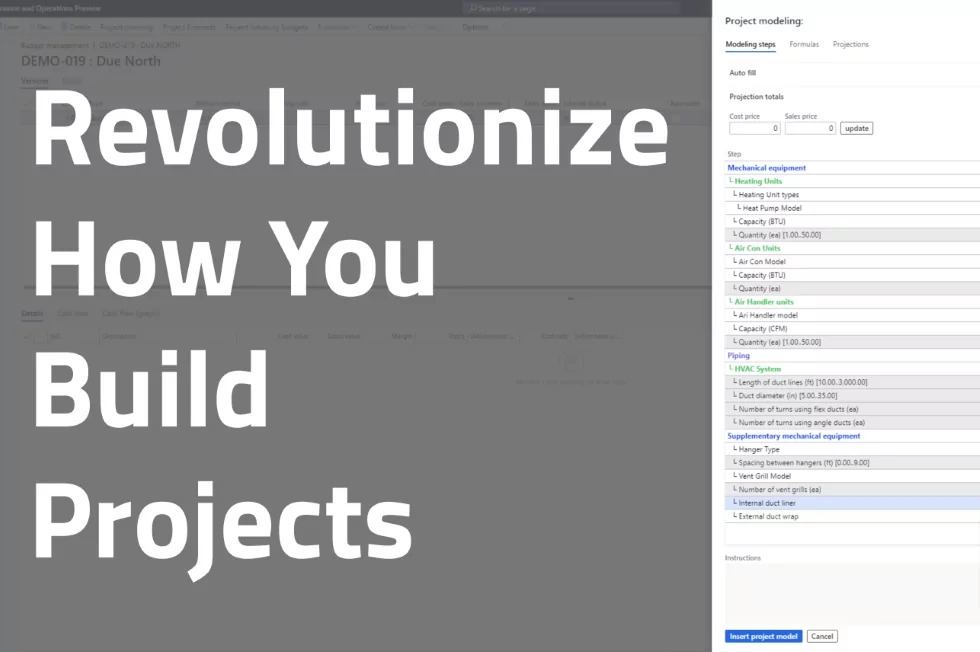
Project Modeling is an entirely new approach to the sales, project estimation, and initiation phase of a project. Akin to a product configurator for manufacturing, a project modeler builds the components (i.e. the tasks and costs) of a project from a predefined set of models.
The user configures the components of the model with the specifications for a particular project. The project model then constructs the project plan and estimates through a system of rules. In practice, the user simply answers a series of questions and the system creates the project schedule (work breakdown structure) and cost and price estimates (cost breakdown structure) automatically.
In practical terms, Project Modeling is a way of parametric estimating your projects.
Learn more about Adeaca’s Project Modeler and how you can setup every project for success right from the start.
A Project Model differs significantly from a project template. A template simply copies a pre-constructed or previously used project schedule and pastes it into a new project. A Project Model uses a framework or formula for a project with user-defined variables to create an accurate project plan and cost estimate. Once the model is configured and inserted, little to no further editing is required.
Download the Project Modeling Whitepaper to learn how to create a streamlined and controlled planning and estimating process for your company.
There are two major benefits of using project modeling versus the typical method of building a project manually or through templates.
The first benefit is speed. Normal methods may require hours or even days, as the project manager builds each task by gathering information from various stakeholders.
With a Project Modeler, an entire project can be configured in a manner of minutes. Price and cost estimates, task schedules, and Gantt charts are created instantaneously after configuring and inserting a model into a project. As a result, speed in the project initiation process can be improved by an order of magnitude.
The second benefit is increased project governance. Project models capture and scale best practices across the company and at the very start of the sales cycle. Project Models also reduce human error. Salespeople utilizing a Project Modeler are ensured to create the best possible plan.
Since plans developed in a Project Model represent the best processes possible, the transition from sales to execution is seamless. Sales and operations are always aligned, reducing rework and making sure the best project plan is proposed and executed against.
Project Modeling is part of Project Business Automation from Adeaca. Download the Project Business Automation Blueprint to learn how PBA creates a streamlined, comprehensive system for project-based companies.
Find the Project Management Software that is best for your business. Try one of these tools and get started today!
ETO Software is a broad term that could be referred to different applications, namely either Engineer-to-Order (ETO) software or Efforts…
Clarizen was a collaborative work management software that was acquired by Planview.
EcoSys by Hexagon is a comprehensive Enterprise Project Performance (EPP) platform designed to provide control, efficiency, and profitability of projects.
Kantata is a cloud-based Professional Services Automation (PSA) solution specifically designed for agencies, professional services organizations, and consultants.
Planisware is a provider of cloud-based enterprise project portfolio management (PPM) software. Planisware Enterprise is its flagship product.
This website uses cookies.